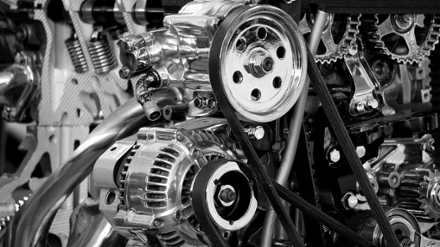I’ve never been a real hands-on type of guy, but I wish I were more handy with fixing stuff. I’m most interested in cars, actually: I would love to be one of those guys who can tune cars and diagnose problems! Unfortunately, I don’t even know where to start. I have no idea how engines work or what to look for when something is going wrong. Experts, can you give me a crash course? I don’t expect to become a certified mechanic overnight, but I wish I knew enough to not embarrass myself when I go to the mechanic.
The overwhelming majority of Americans own cars, but how many of us us really know how they work? Your goal to learn a bit more about the vehicles that get you around is a good one, and you’ll be happy to know that acquiring a working knowledge of how cars work isn’t as difficult as you may think.
Cars are built around the internal combustion engine. As the name suggests, internal combustion engines work by lighting a fire (combustion) inside of them (internal). The basic idea behind the engine is that a mixture of gasoline and air is injecting into a cylinder (in a car, the cylinder is negative space: a cylindrical empty shape within the engine block). That mixture is ignited with a spark plug.
The cylinder’s negative space isn’t complete empty: there are pistons set up inside each of your car engine’s cylinders. The combustion of the gasoline presses the piston down. Pistons in a car’s engine are connected, so pushing some down will push others up within different cylinders. This sets up the next set of of combustions and cylinder movements.
A happy engine will run smoothly. As with a heartbeat, irregular noises from an engine are bad: a chugging sound, for instance, is bad. Problems with this central system are common in older cars, because a lot goes into making sure that cylinders work perfectly. The cylinders and pistons are accessible by disassembling the engine block on most cars, but that means that there have to be seams in the setup — seams that, if not set perfectly, can allow pressure to escape and ruin the whole point of the combustion engine. The two parts of the engine and the large, specialized, gasket between them (the head gasket) need to be set perfectly in order to work properly. The same goes for the cylinder heads and other places where pressure could escape. Cylinder heads sit on top of the engine block and cover the cylindrical holes, offering another place for mechanics and others to access inner parts like pistons — but also another place for pressure to escape or a part to fail, mechanics will tell you!
You may hear sounds other than those made by a malfunctioning engine, because your car’s engine is far from the only thing under its hood. Learn to identify the sound made by a laboring belt! Belts use your engine’s power to drive other systems. They should be changed regularly, especially the all-important timing belt (or timing chain).
Another great basic car lesson to learn is how to tell the difference between various starting problems. A dead battery will sound different from an issue with your car’s starter motor, for instance.
Knowing a bit about your car’s engine will help you when it’s time to chat with your mechanic, though it’s important to remember that a good, honest mechanic won’t require you to know about cars as this is their job. But even more important than this knowledge is knowing the basics of roadside safety. Practice changing a tire, and make sure that your car is equipped with safety kits that include road flares and reflector triangles.
Content Provided by Scholarship Media


